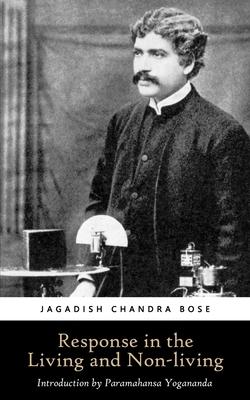He subjected plant and animal tissues to various kinds of stimulus, and found that they all showed an electric response. Finding that this reaction occurred in metals as well as plants and animals, he then proceeded to study the differences in response under various conditions.
He found that all materials are numbed by cold, intoxicated by alcohol, wearied by excessive work, stupefied by anesthetics, excited by electric currents, stung by physical blows, and killed by poison. They all exhibit essentially the same reactions of fatigue and depression, together with the capacity for recovery and strength, and also permanent unresponsiveness, or death. All materials are responsive or unresponsive under the same conditions and in the same manner.
His investigations showed that in the entire range of responses - regardless of whether the subject is metallic, plant or animal - there are no exceptions. The living response, in all its diverse modifications, is a repetition of the responses seen in the inorganic. Further, the nature of the response is determined not by the play of an unknowable and arbitrary vital force, but by laws that do not change, and act equally and uniformly throughout both organic and inorganic matter.
This realization was always at the core of his work. He sought to show that all materials react to their environments according to the same laws; in other words, everything exists in the same field of consciousness.
This book was originally published in 1902.
Reviews
"This work outlines some of his greatest work, the thin line between living and non-living material. This timely reprint is a testament to a remarkable man whose achievements in science beggar belief to this day."
"Bose is one of those geniuses who has been lost in history. I hope that anyone looking to expand their minds will enjoy the great adventure this read is."
Contents
Introduction by Paramahansa Yogananda
(from Autobiography of a Yogi)
1. The mechanical response of living substances
2. Electric response
3. Electric response in plants - method of negative variation
4. Electric response in plants - block method
5. Plant response - on the effects of single stimulus and of superposed stimuli
6. Plant response - on diphasic variation
7. Plant response - on the relation between stimulus and response
8. Plant response - on the influence of temperature
9. Plant response - effect of an sthetics and poisons
10. Response in metals
11. Inorganic response - modified apparatus to exhibit response in metals
12. Inorganic response - method of ensuring consistent results
13. Inorganic response - molecular mobility: its influence on response
14. Inorganic response - fatigue, staircase, and modified response
15. Inorganic response - relation between stimulus and response
16. Inorganic response - effect of chemical reagents
17. On the stimulus of light and retinal currents
18. Inorganic response - influence of various conditions on the response to stimulus of light
19. Visual analogues - Effect of light of short duration
20. Conclusion
FOR MORE DETAILS, see https: //adistantmirror.com/response-in-the-living-and-non-living/